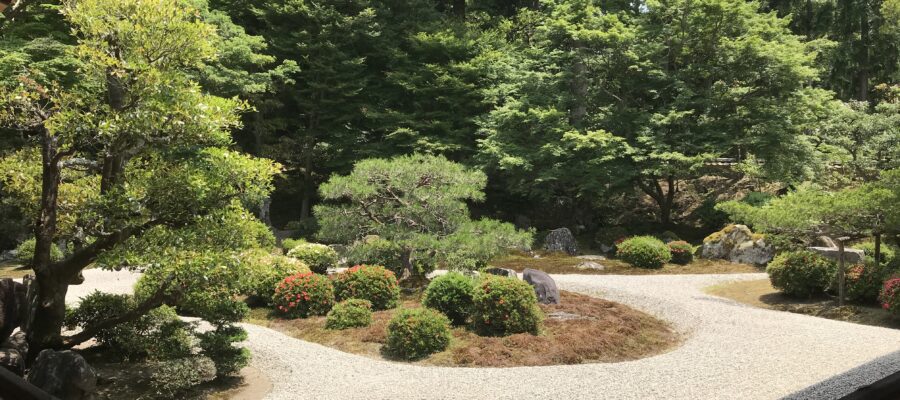曼殊院門跡
京都の庭園を訪れるようになって何回目でしょうか。今回も京阪電鉄終点の出町柳駅にて、のんびり感のする叡山電鉄に乗り換えて修学院駅まできました。そこから緩い坂道をだらだら登りながら20分、曼殊院門跡の勅使門に突き当たりました。
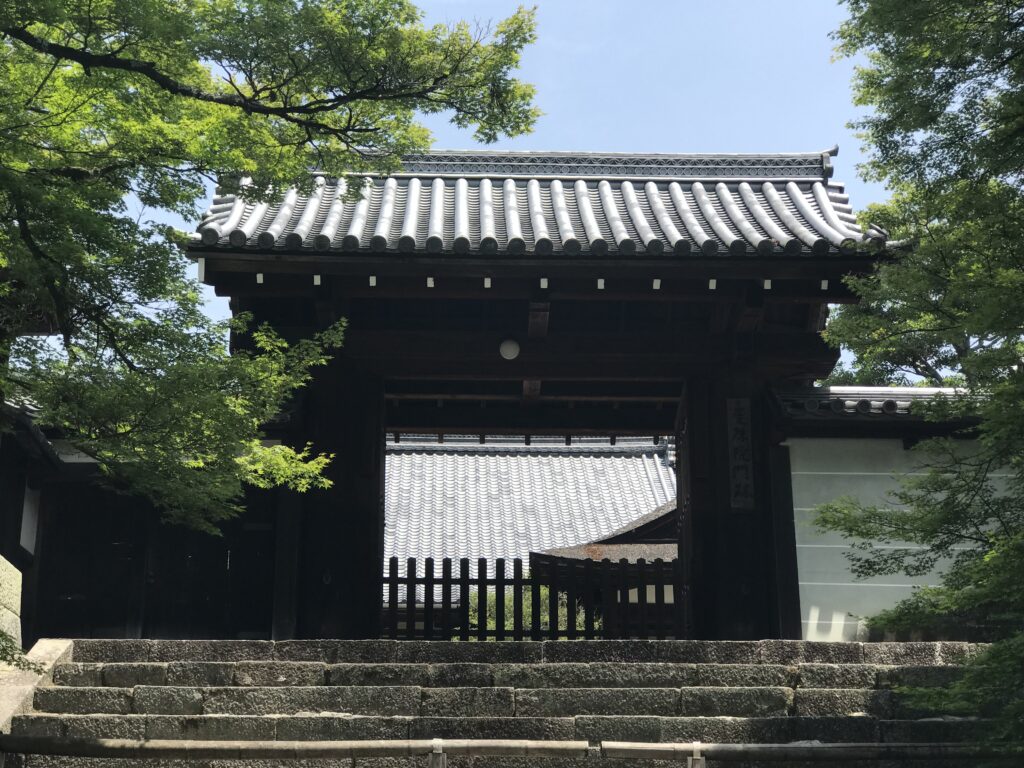
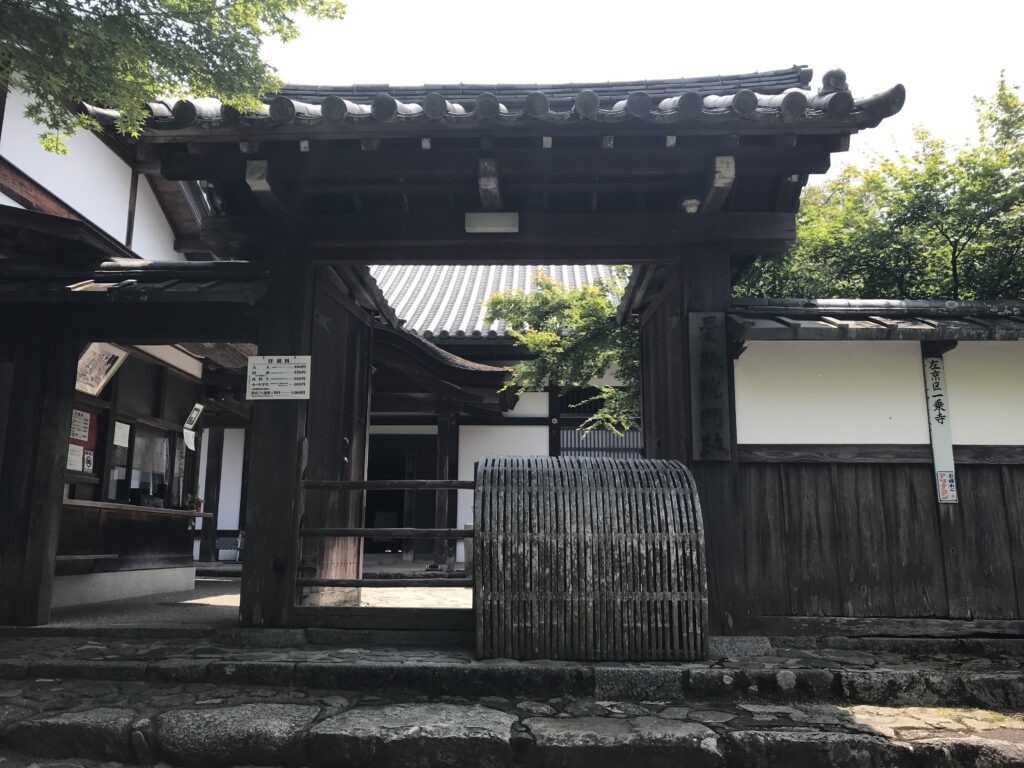
軒下の回廊から眺める庭園
ただし、この勅使門から入れないので、北通用門の受付から入ります。赤い薄手の絨毯を敷いた軒下の回廊を歩くと、金閣寺の陸船の松のような植栽が目に入ってきます。その角を折れて次の角の所まで来ると、枯山水庭園を広く見渡すことができます。
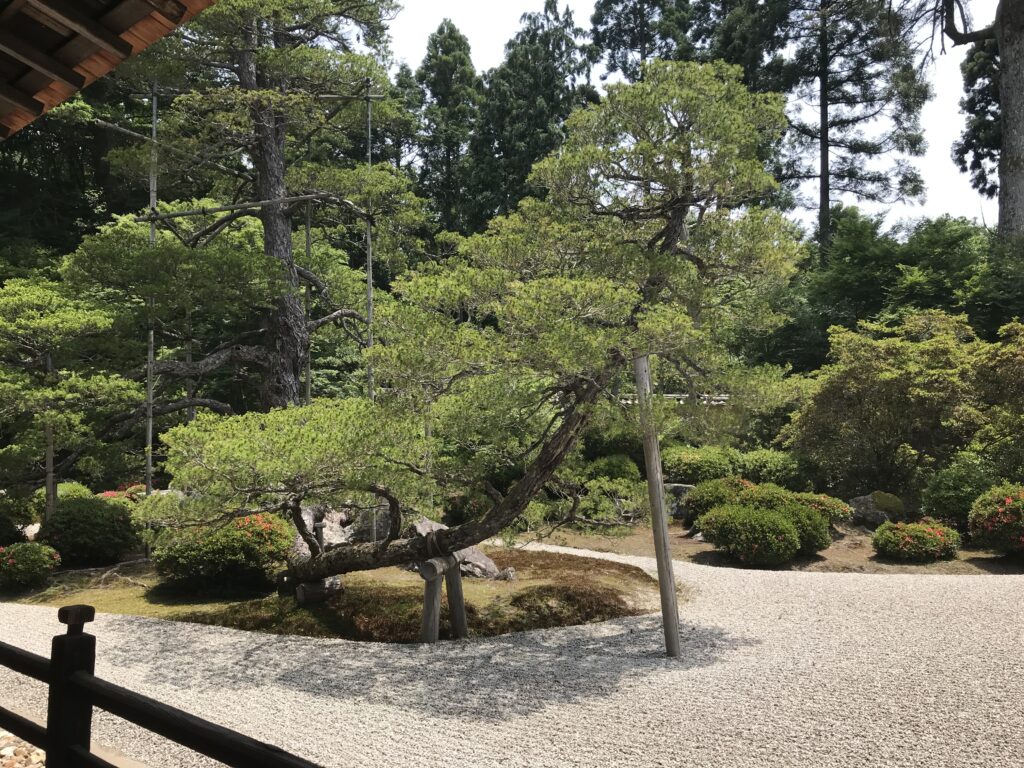
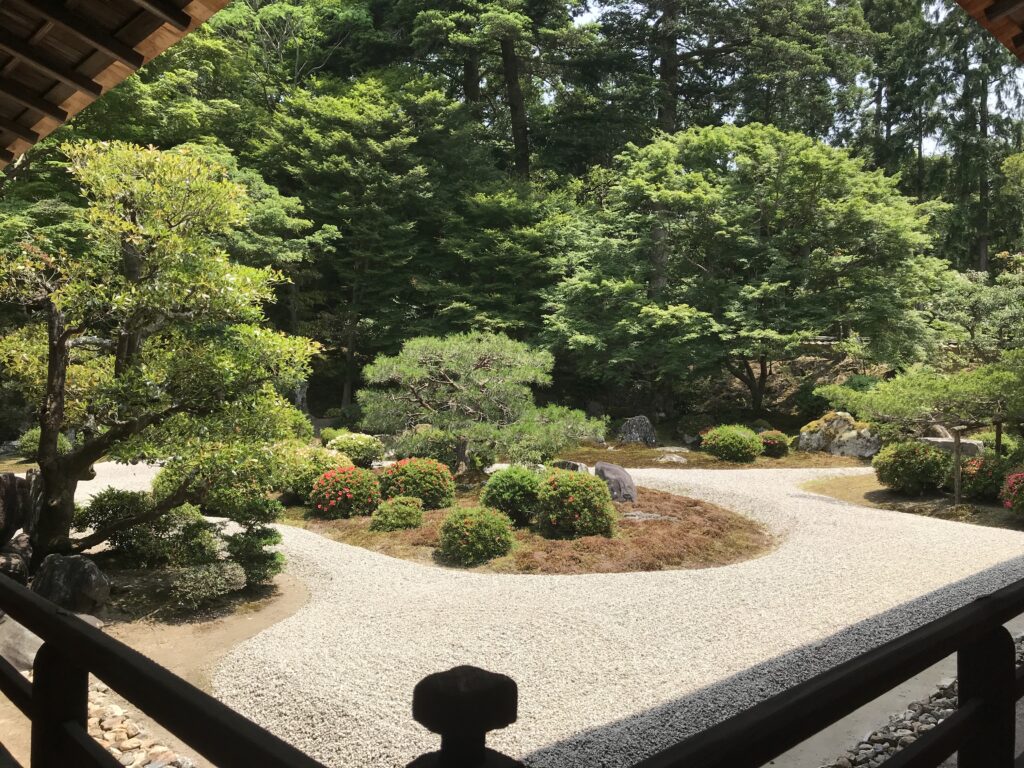
一番目に付く白砂の海に浮く島をゆっくり眺めてみます。丸く刈ったつつじの植栽の真ん中に五葉松が一本、起立しています。この木は樹齢400年で鶴を表現していると言われています。訪問した日は、つつじもいくつか花を残していました。
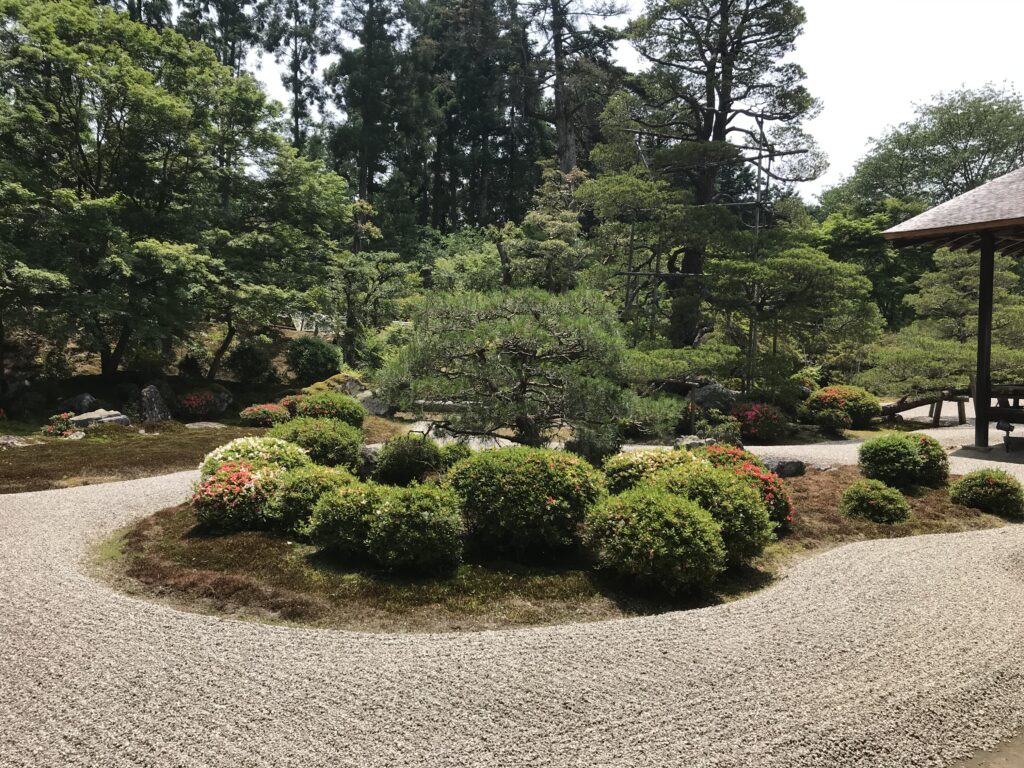
大書院と小書院
ここでは、大書院や小書院の内部が撮影禁止なので写真はないのですが、大書院の欄間に卍崩しが彫られていたり、小書院では独特のデザインが彫られていて、そちらも楽しむことができます。特に小書院は静かに水面を遡る屋形船を表現しているそうです。
そのため、庭に面した回廊の欄干が、船から外を見るイメージの意匠になっています。江戸時代の代表的な書院建築ですが、所々に遊び心があふれていて、当時の趣味人の感性が伝わってきます。(完)
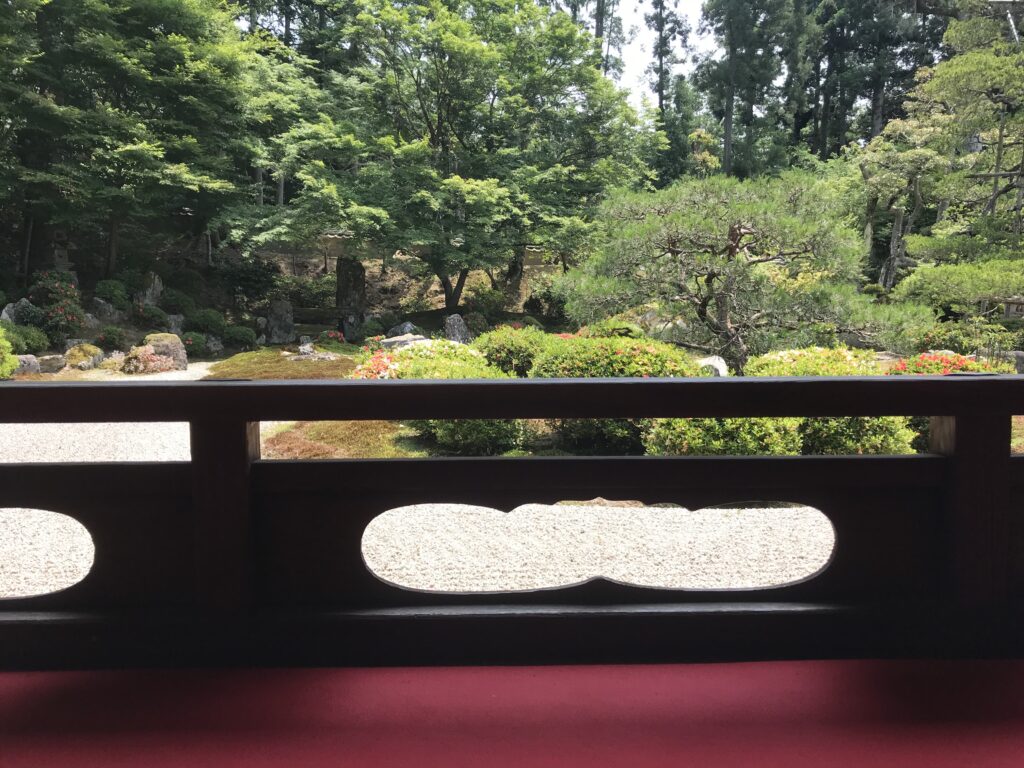
曼殊院の御朱印
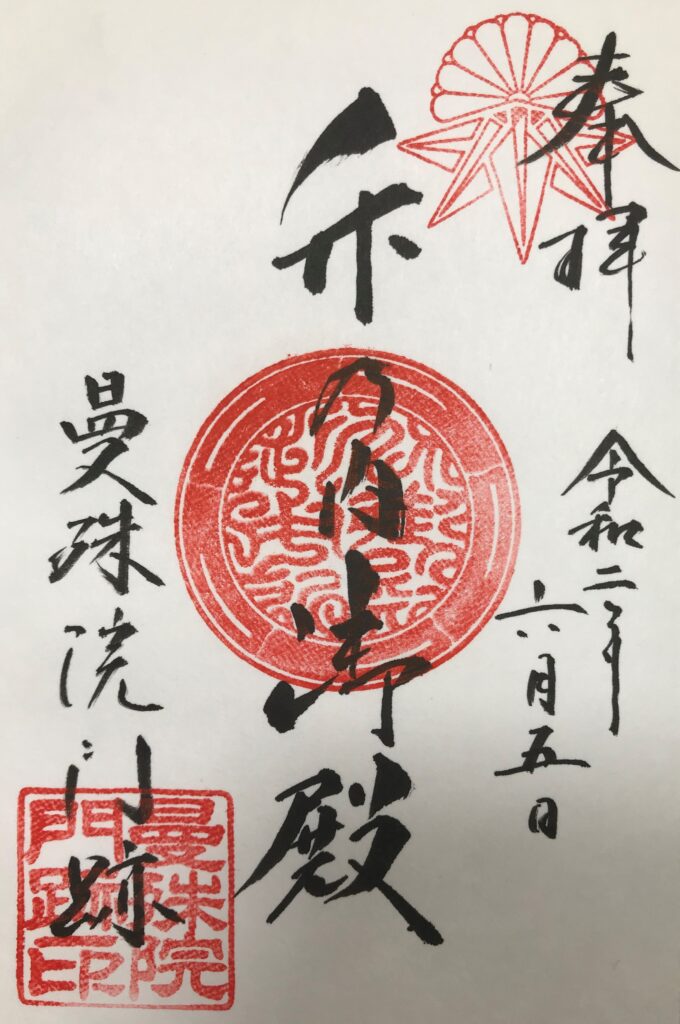
曼殊院が紹介されている書籍
ガーデンデザイナーの烏賀陽百合さんが曼殊院の庭園について解説されています。
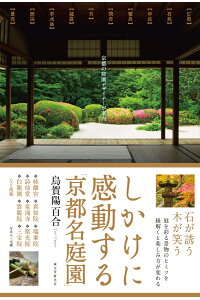
しかけに感動する「京都名庭園」 京都の庭園デザイナーが案内 [ 烏賀陽 百合 ]
価格:1,760円
(2021/5/2 18:44時点)
感想(1件)
Manjyuin Temple (English)
Manjyuin Monzeki (Imperial family related) Temple
How many times have I visited the gardens of Kyoto? This time, at Demachiyanagi Station, the last stop of the Keihan Electric Railway, I changed to the Eizan Electric Railway for a more leisurely ride to Shugakuin Station. From there, I walked up the gentle slope for 20 minutes until I reached the Chokushimon (the gate for the imperial envoy) Gate of Manjyuin Temple.
A view of the garden from the corridor under the eaves
However, I could not enter through this imperial gate, so I must enter through the reception desk at the north service gate. As I walked along the corridor under the eaves covered with a thin red carpet, I saw a planting that looks like a pine tree in the shape of a land ship at Kinkakuji Temple (Golden Pavilion). When I turned the corner and came to the next corner, I had a wide view of the dry landscape garden.
I took my time to look at the most noticeable island floating in the sea of white sand. A five-leaf pine tree stands in the middle of the roundly trimmed azalea plantings. This tree is 400 years old and is said to represent a crane. On the day I visited, some azaleas were still in bloom.
Large Shoin Room and Small Shoin Room
I don’t have any pictures of the interior of the main and small shoin because photography was prohibited there, but I could enjoy the swastika carvings on the railings of the main shoin room and the unique designs on the small shoin room. The small shoin room in particular is said to represent a houseboat quietly moving up the water.
For this reason, the balustrade of the corridor facing the garden was designed to resemble the image of looking out from a ship. Although that was a typical Shoin architecture of the Edo period, it was full of playfulness and conveys the sensitivity of the hobbyists of the time. (End)
Temple Manjyuin (Français)
Temple Manjyuin Monzeki (lié à la famille impériale)
Combien de fois ai-je visité les jardins de Kyoto ? Cette fois-ci, à la station Demachiyanagi, le dernier arrêt du chemin de fer électrique Keihan, j’ai changé pour le chemin de fer électrique Eizan pour un trajet plus tranquille jusqu’à la station Shugakuin. De là, j’ai remonté la pente douce pendant 20 minutes jusqu’à la porte Chokushimon (la porte des envoyés impériaux) du temple Manjyuin.
Une vue du jardin depuis le couloir sous l’avant-toit
Cependant, je ne pouvais pas entrer par cette porte impériale, je dois donc passer par la réception de la porte de service nord. En marchant dans le couloir sous l’avant-toit recouvert d’un mince tapis rouge, j’ai vu une plantation qui ressemble à un pin en forme de navire terrestre au temple Kinkakuji (Pavillon d’or). Lorsque j’ai tourné le coin et que je suis arrivé au coin suivant, j’ai eu une large vue sur le jardin paysager sec.
J’ai pris le temps de regarder l’île la plus visible qui flotte dans la mer de sable blanc. Un pin à cinq feuilles se dresse au milieu des plantations d’azalées taillées en rond. Cet arbre a 400 ans et on dit qu’il représente une grue. Le jour de ma visite, certaines azalées étaient encore en fleurs.
Grande salle Shoin et petite salle Shoin
Je n’ai pas de photos de l’intérieur du shoin principal et du petit shoin, car il était interdit de photographier à cet endroit, mais j’ai pu apprécier les sculptures en forme de svastika sur les rampes de la salle du shoin principal et les motifs uniques de la petite salle du shoin. La petite salle du shoin, en particulier, est censée représenter une péniche se déplaçant tranquillement sur l’eau.
Pour cette raison, la balustrade du couloir donnant sur le jardin a été conçue pour ressembler à l’image d’un bateau. Bien qu’il s’agisse d’une architecture Shoin typique de la période Edo, elle est pleine d’esprit ludique et traduit la sensibilité des amateurs de l’époque. (Fin)
